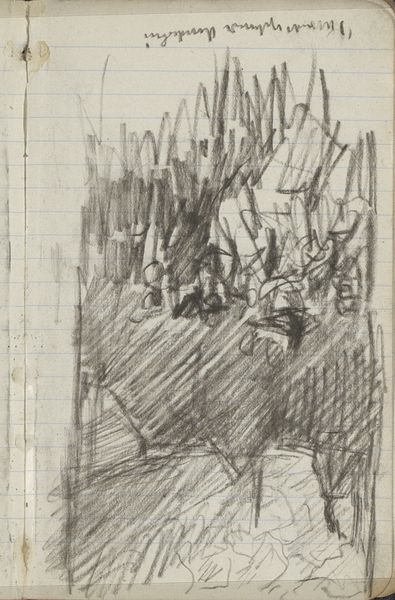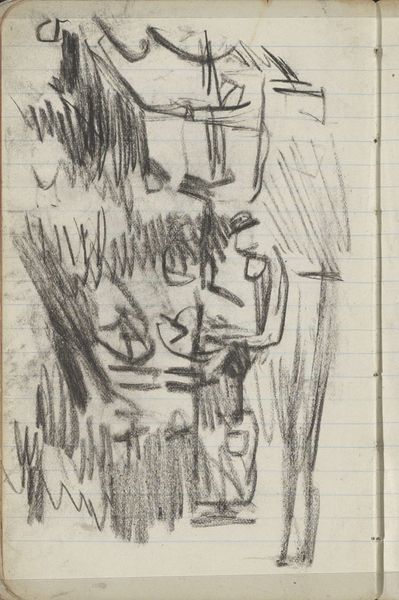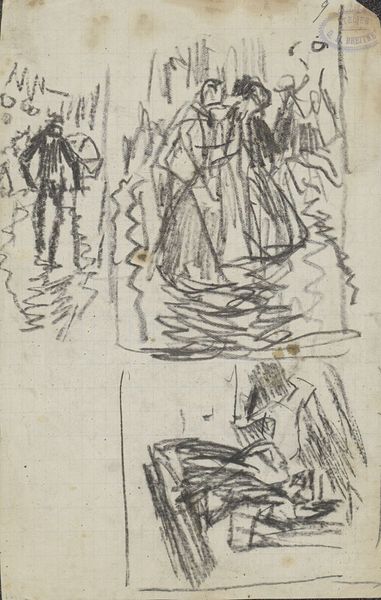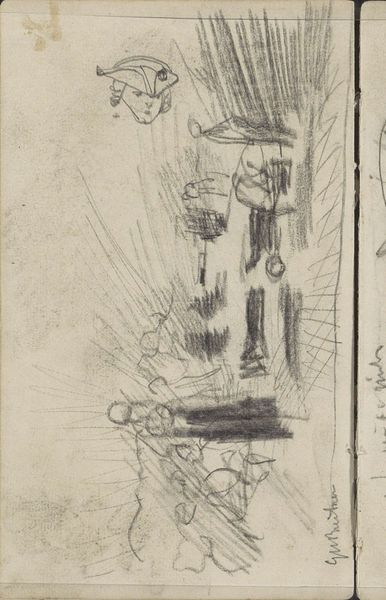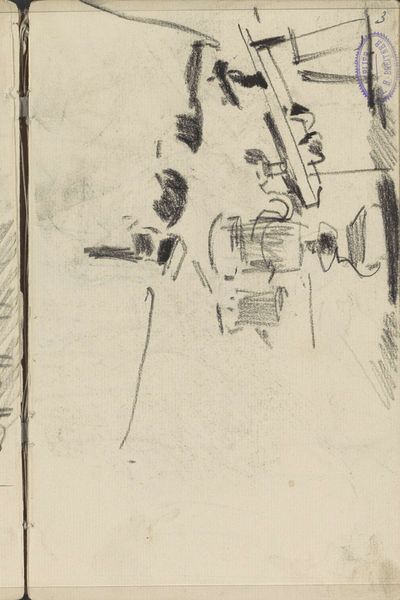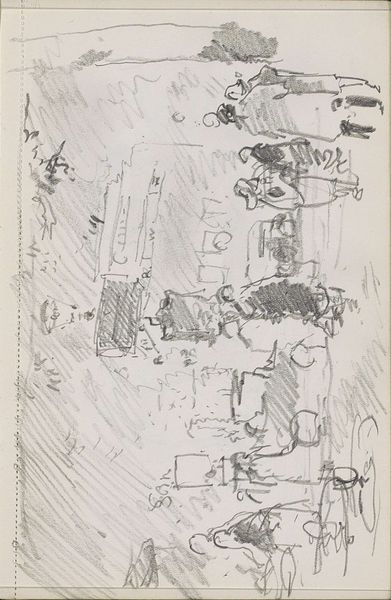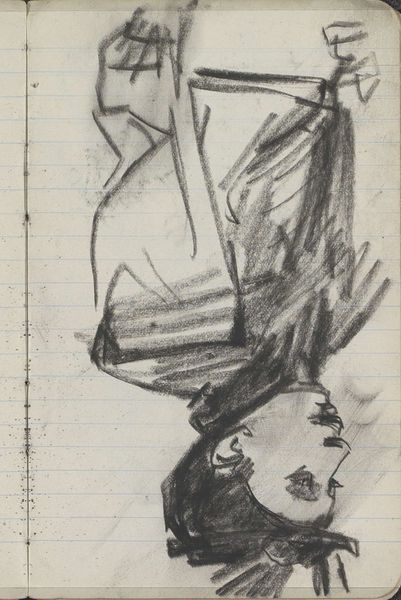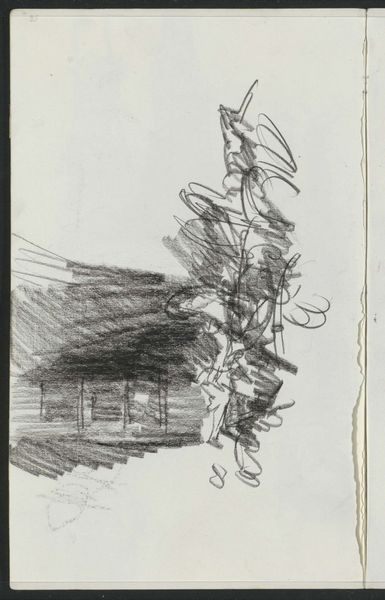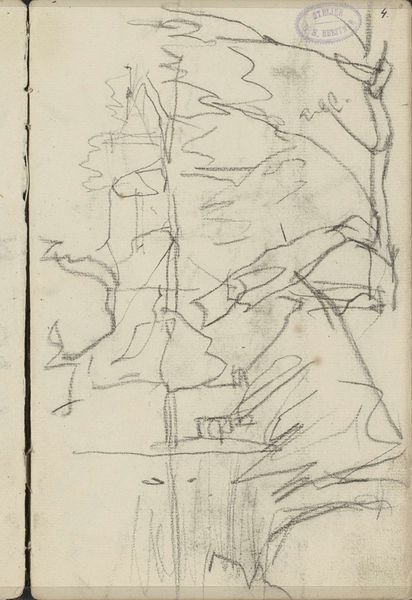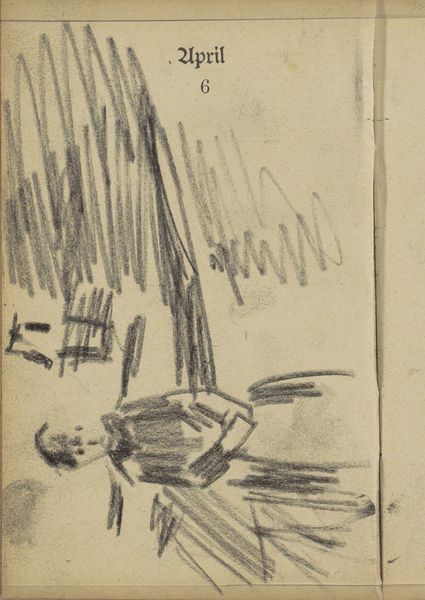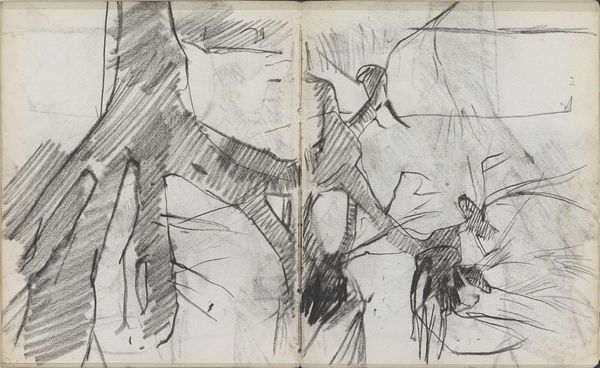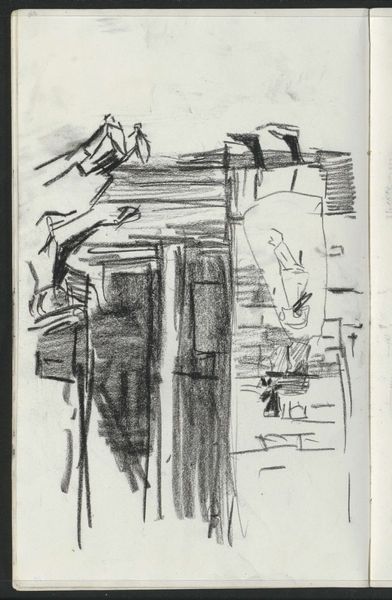
drawing, graphite
#
portrait
#
drawing
#
quirky sketch
#
pen sketch
#
dog
#
personal sketchbook
#
idea generation sketch
#
sketchwork
#
ink drawing experimentation
#
pen-ink sketch
#
graphite
#
sketchbook drawing
#
genre-painting
#
sketchbook art
#
initial sketch
Copyright: Rijks Museum: Open Domain
Curator: Here we have Isaac Israels' "Two Children with a Dog," a drawing housed right here in the Rijksmuseum, made sometime between 1875 and 1934. My initial feeling is a sense of captured spontaneity. There is a life about the quick strokes of graphite that speaks volumes about the casual, fleeting nature of the depicted scene. What do you make of it? Editor: At first glance, it evokes the world of Daumier’s sketches, with the social observations and the focus on line. Israels plays with bold contrasts – light and shadow defining form with an impressive economy. I immediately register the textural play across the figures; consider the boy's crisply defined striped trousers. What's interesting here is how such gestural markings are also evocative of specific dress codes, and perhaps a place. Curator: Absolutely. The dog, for instance, seems almost an afterthought, a scribble, but its presence completely contextualizes the human figures; their tenderness toward the animal reflects a cultural attitude toward pets. The scene recalls a family moment of warmth and inclusion, but this can only be understood through the artist’s rendering of a complete and shared social landscape. Editor: I’d agree with the shared landscape, however, that hasty sketch quality, for me, moves beyond observation, placing an emphasis on movement. Those quickly laid lines serve to imply animation and even audible playfulness—I hear the happy yapping! But you're right, this spontaneity in presentation doesn’t divorce itself from careful consideration of the relation between humans and animals in society. Curator: It also subtly suggests an element of temporality, the drawing becoming a physical reminder of something temporal but beautiful that might soon disappear from view; perhaps a social commentary that everything passes, even joy, that only art can stop, examine, and help one recall such ephemera in its purity. Editor: Perhaps so! Its quick capture, for me, emphasizes not the end, but the vivacity present, but as an artwork it leaves open so much to question as a complete picture, with everything from personal, artistic vision to even sociological dimensions being worthy of observation here. It also goes to prove even incomplete form leaves enduring impressions and even feelings.
Comments
No comments
Be the first to comment and join the conversation on the ultimate creative platform.
